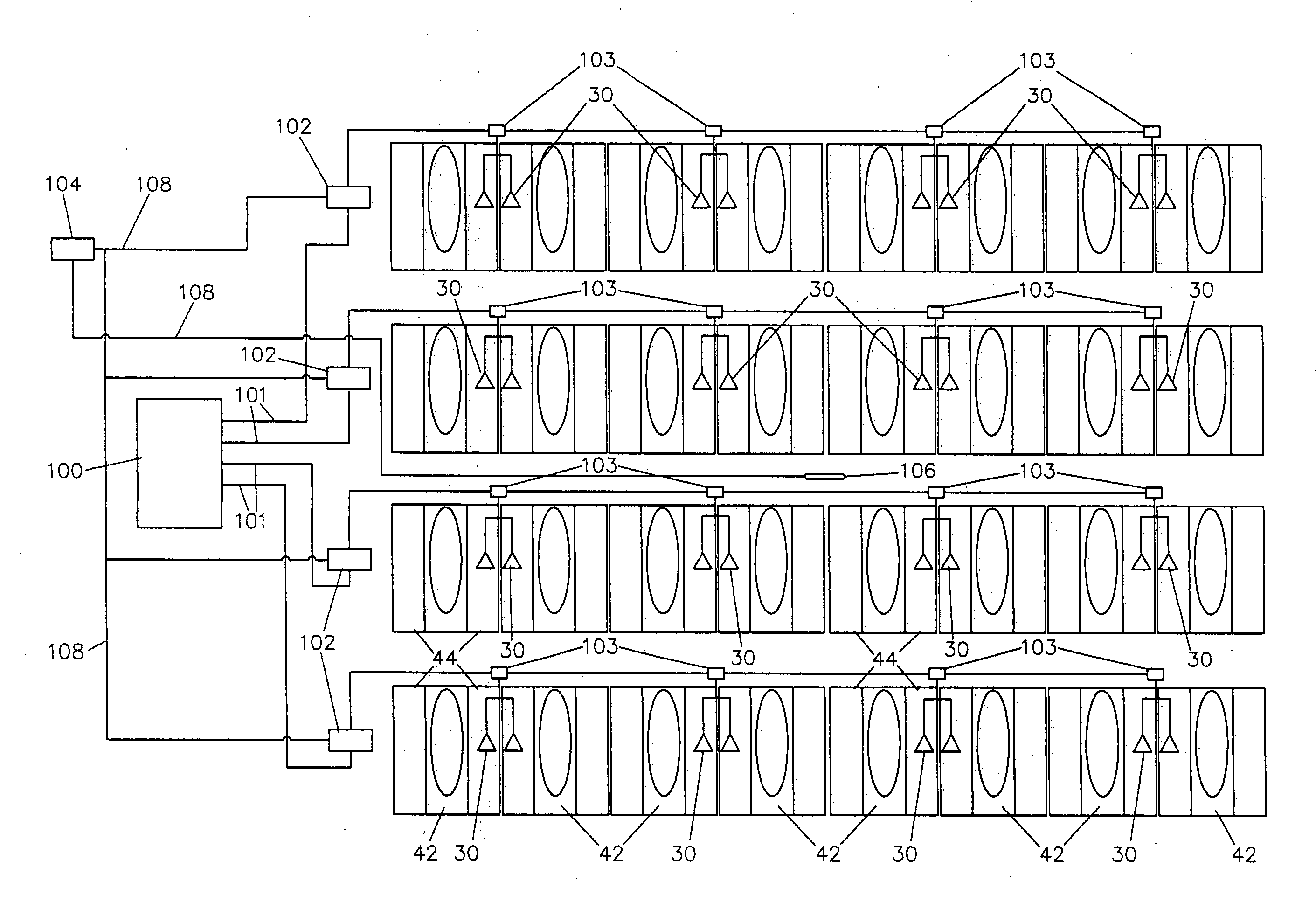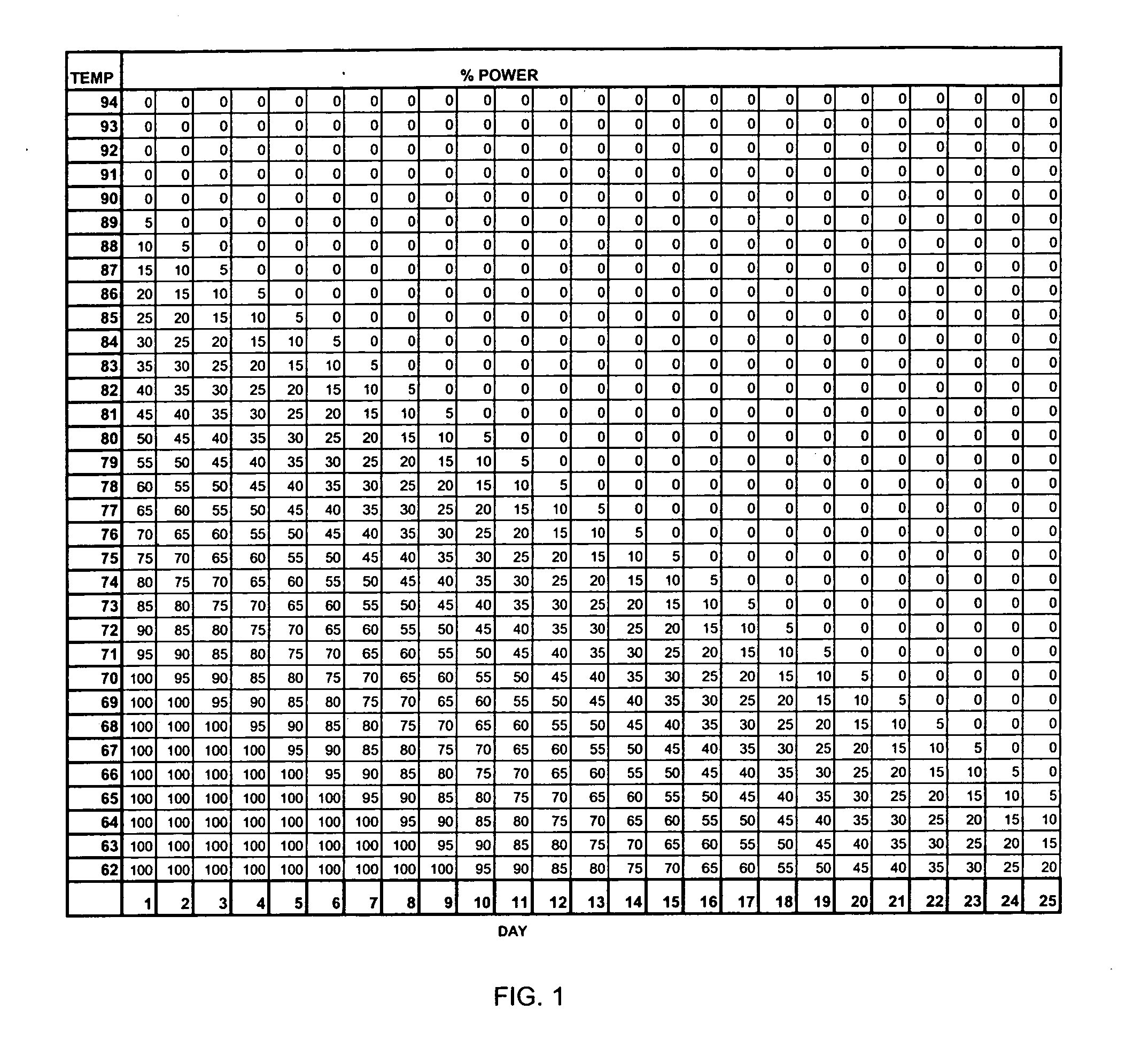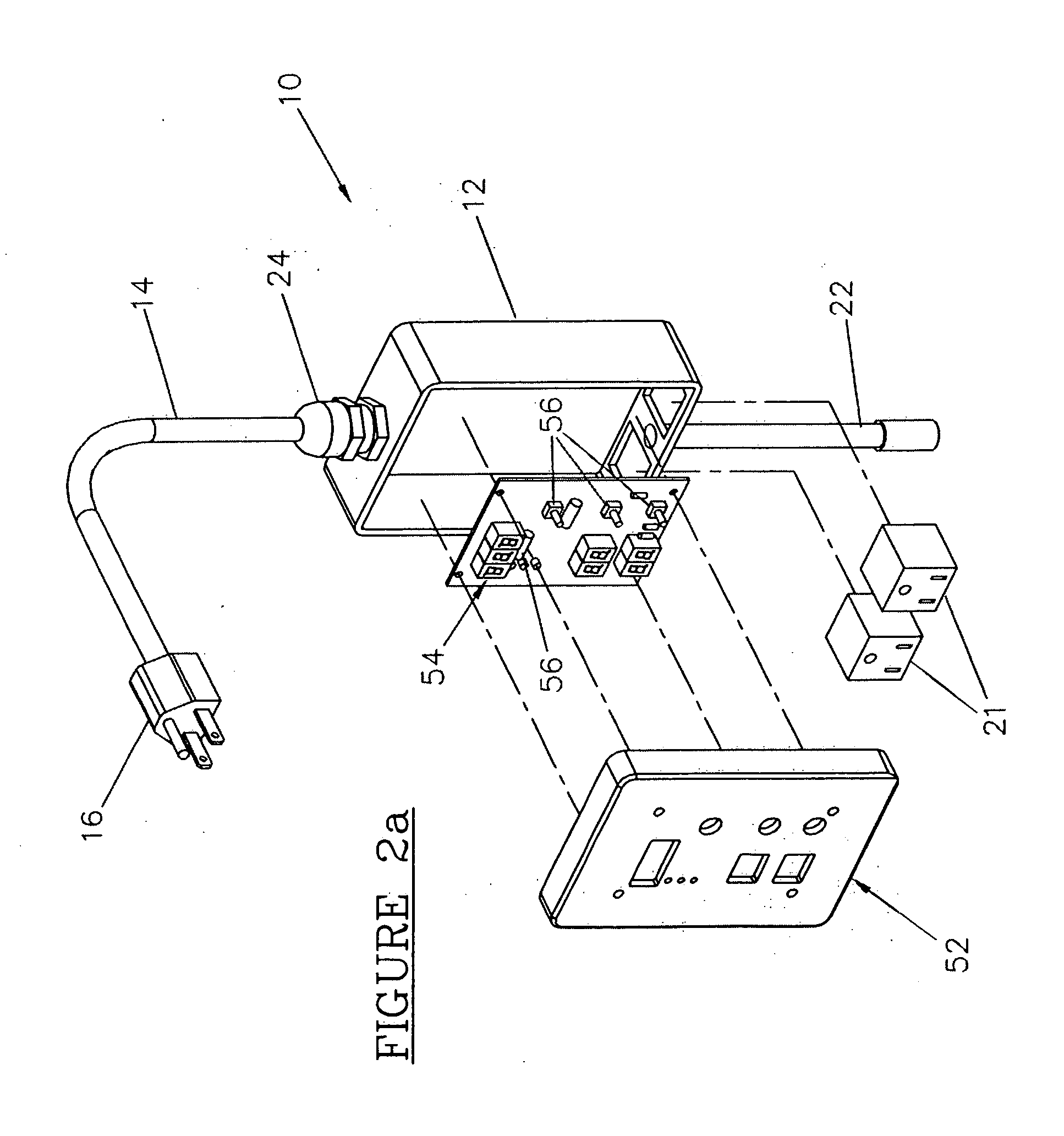Power control system for heating devices and method of providing a heated microenvironment within a larger environment
a technology of power control system and heating device, which is applied in the direction of heating devices, heating types, furnace heating elements, etc., can solve the problems of affecting the health of animals, rheostats and similar manually adjusted devices lack the ability to dynamically adjust the heater's output, and too little or too much heat being applied to the microenvironment, so as to prevent electromagnetic noise
- Summary
- Abstract
- Description
- Claims
- Application Information
AI Technical Summary
Benefits of technology
Problems solved by technology
Method used
Image
Examples
Embodiment Construction
[0031] The power control of the present invention may be embodied in a stand-alone device such as that pictured in FIGS. 2a and 2b or in a hard-wired version such as that pictured in FIGS. 6-7. Referring first to FIGS. 2a, 2b, and 4, a portable embodiment of the power control 10 can be seen to comprise a small watertight enclosure 12 with an input power cord 14 having a suitable and standard male or female coupling 16, and an external temperature sensor 22. The portable embodiment of the power control 10 may further comprise one or more built in receptacles 21 that are built into the housing 12 (see FIG. 2a) or an output power cord 18 with one or more standard receptacles 20 (see FIG. 2b). The input power cord 14, output power cord 18 (where present), and the temperature sensor 22 preferably enter the enclosure through liquid tight strain relief connectors 24, though it is to be understood that any suitable connection mechanism may be utilized.
[0032] Referring next to FIG. 4, the p...
PUM
 Login to View More
Login to View More Abstract
Description
Claims
Application Information
 Login to View More
Login to View More - R&D
- Intellectual Property
- Life Sciences
- Materials
- Tech Scout
- Unparalleled Data Quality
- Higher Quality Content
- 60% Fewer Hallucinations
Browse by: Latest US Patents, China's latest patents, Technical Efficacy Thesaurus, Application Domain, Technology Topic, Popular Technical Reports.
© 2025 PatSnap. All rights reserved.Legal|Privacy policy|Modern Slavery Act Transparency Statement|Sitemap|About US| Contact US: help@patsnap.com



